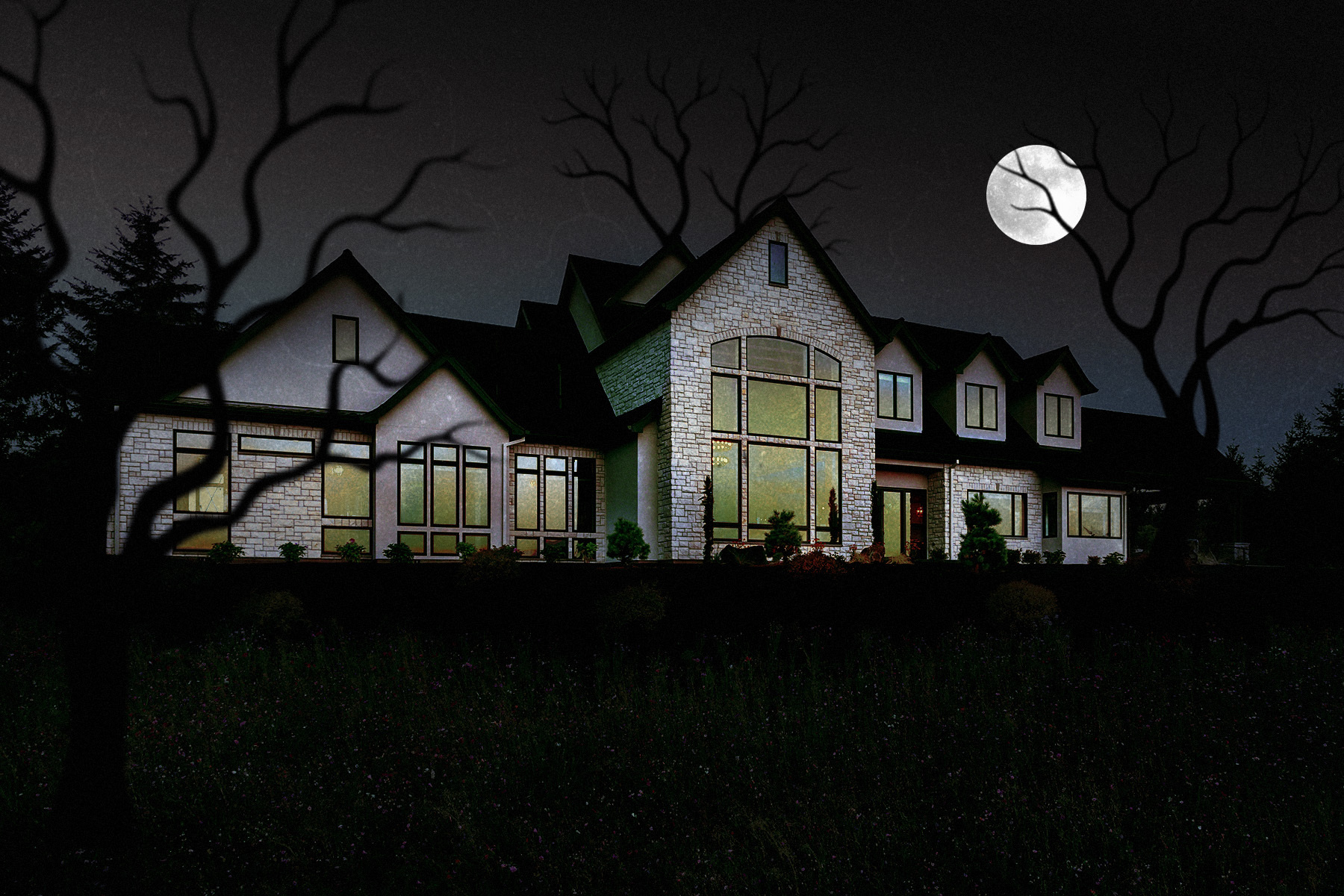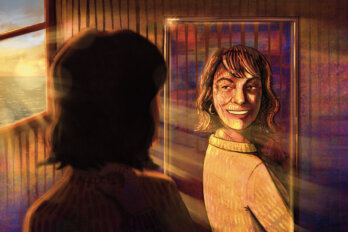The first time I remember seeing a mansion, I was headed to the Assiniboine Park Zoo in Winnipeg with a friend assigned to me by a charity that paired adults with poor kids whose parents needed a break. I turned to this nice middle-class woman, who patiently tolerated my endless questions, and asked how many families lived in the giant houses we were passing. Their lawns could practically fit the entire government-run townhouse complex where I lived.
She laughed and said, “Just one.” And we both fell silent for a while as we took in what that meant.
I now live in an apartment in a lively residential neighbourhood in Vancouver. When my partner and I moved in, the building manager told us the old walk-ups along our street—including the one we occupy—had been built in the 1940s as residences for nurses working at the two nearby hospitals. These young women were apparently meant to live here only a short time, and they rarely ate at home, which is why each unit has a narrow galley kitchen and an extra small fridge and oven.
Except for the cramped kitchen and poor wiring—no one in the 1940s could have predicted how many outlets we’d need today—this apartment is all I’ve ever needed. I have an office for writing and a living room large enough for gatherings. Throughout the pandemic, my partner and I have been able to work from home at the same time in relative comfort as long as I close the office door.
Still, it’s hard to escape that desire for more. A balcony perhaps. A view of the ocean. A kitchen with an island so I can chat with guests while I cook.
My apartment is a short walk from a neighbourhood called Shaughnessy, where the average home on the market now costs around $9 million but can go as high as $34 million. My own area is alive with young families, but Shaughnessy is silent, as if the sibilance of its name has created a supernatural barrier against the outside world.
I like to walk through Shaughnessy between seasons when it feels most like a dream—in fall, when the towering oaks are aflame, or early spring, when the moss glistens with dew and the boulevards are covered in a purple gauze of blooming crocuses. In both seasons, it feels like I’m walking into one of those old movies where each frame was painted by hand.
There are very few people on the sidewalks of Shaughnessy. Those who live there glide in and out of driveways in electric cars that make little more than a hum. When I do pass someone, we share a look of surprise as if we had both forgotten other people were real.
Maybe this is why ghost stories seem like the right accompaniment for these walks. More than once, I’ve listened to the audiobook of Shirley Jackson’s 1959 Gothic horror novel The Haunting of Hill House, a book about a lost young woman, with possible psychic abilities, who develops a strange relationship to a mansion that has gone insane. Houses, the book posits, can be alive. They can love or hate, grow and shrink according to the lives of the occupants. Houses, in short, are bodies that hold bodies.
This seems especially true in Shaughnessy. There are so few humans, yet the houses are characters themselves—stately dowagers or flashy new money from Europe. If you look up at the right moment, you might catch one sidling over to gossip with its neighbour.
As a child, I had nightmares about houses. In one that recurred, I was babysitting a child or children. The parents would put me in charge, certain I was a good and responsible girl, but only after they left would I realize the child they wanted me to care for was already horribly injured, her feet bleeding stigmata-like. If I wanted her to live, I would have to go into the basement—the underworld—to rescue her ghost and put it back in her body.
My mother once told me that in Jungian dream analysis, the house represented the self. A disturbance in the house was a disturbance in the self. I think she meant this to be comforting—if I could figure out what was bothering me, I could fix it—but it filled me with horror. I was too young to take lightly the possibility that some part of me was a child who was slowly bleeding to death from mysterious wounds in her feet.
It didn’t occur to me that I was working through an external conflict rather than an internal one. The child I was trying to rescue was me. The haunted house was my own uneasy home. The haunting was my fear of and for my mother, whose mental health I saw deteriorate in devastating ways. But all this terror was hard to pin down during the day, so it got shunted into the houses in my dreams.
Houses often disappear in Shaughnessy. First, they are surrounded by orange fences. Then men in orange vests crawl inside and cannibalize what they can, throwing slabs of drywall and lengths of wire and pipe out the windows into waiting dumpsters below. The remaining shells sometimes sit empty for a long time after that, surrounded by metal fences to keep out squatters and thieves.
There was one house that was stuck empty for more than a year as it went through a series of permit disputes chronicled in pages of notices tacked to the fence out front. It was low and sprawling, a half-century-old rancher with modernist details. From a time when Vancouver was trying to be Los Angeles.
Maybe because of the disputes, the workers weren’t conscientious about locking the fences once the place was emptied out. One afternoon, I walked through a hole in an overgrown hedge and into the backyard. I expected to be stopped, but the place was empty, cracked plant pots littering the weeds in the backyard. There was no door, so I went inside. I found the walls had been stripped down to their studs and the floor to its spongy carpet lining. It was like walking through a dinosaur skeleton at a museum.
I tried to imagine what it had been like before. Shag carpet, maybe? State-of-the-art avocado-coloured appliances? A version of luxury that had since passed into kitsch as all such things do. Now the house felt needy, abandoned. It knew its fate was coming. All it could do was wait.
The house became a hole in the ground soon after that. The mansion that replaced it is a Queen Anne Revival, a style from the Victorian era that the internet tells me is recognizable by its round turrets and “gingerbread ornamentation.” Fairy-tale opulence seems somehow fitting in this age of plague and fire.
There are many of these kinds of mansions in Shaughnessy. A few are original, but many are new builds. Modernist architecture was all about futurism and harmony with nature, with wide windows that broke the seal between outside and in. Today’s luxury is a nostalgia for the nineteenth century, a time when many of the neighbourhood’s current residents would have been barred from the country by racist immigration policies. Does anyone feel like they belong in Shaughnessy? Or are we all play-acting, living out a mix of hatred and fetishization of a world that doesn’t want us?
In the ten years I’ve lived in my neighbourhood, whole blocks of single-family homes have been demolished for condos. For a while, I would take photos of the houses marked for demolition and post them on Instagram, not out of nostalgia for a way of life but out of fascination for the moment of transition. After a while, the images became too repetitive. The same front stair to the same gaping hole.
All this new construction was supposed to help solve the housing crisis, but nothing has changed. When the new buildings appear with their signs that promise high-end living, they are no more meant for me than the homes that came before. They’re the offshoots of Shaughnessy’s dream, its promise of luxury in miniature.
Sometimes I imagine what will happen when my building is demolished and I’m turned out into a market where the rent for a cramped two bedroom can already soar over $3,000 a month. In those moments, I feel like an interloper, a thief hoarding the treasure of my tenuous existence. I try not to think about this too often.
Shaughnessy’s residents aren’t supernatural, and its silence isn’t really magic. In their newsletters, the Shaughnessy Heights Property Owners’ Association catalogues all the ways they’ve lobbied and manoeuvred to keep out versions of the world they find objectionable. They’ve railed against leaf blowers, boasted about contorting bus routes, discouraged school expansions, and stymied attempts to break those mansions up into rental units.
Around 2016, a Trump sign appeared in an upstairs window of a light-blue Craftsman-style home (a style favoured from 1900 to 1930, but who knows how old this one is) and stayed there for the next three years. Each time I passed the house, I considered childish ways I could get back at the people who lived there. Toilet-paper their lawn, send 100 pizzas to their door. But I knew nothing I did would cause damage—they would have staff to clean the lawn and a bank account to pay for unwanted deliveries. They probably wouldn’t tip the driver.
As much as I’m fascinated by the unbreachable stillness of the mansions, I could never live that way. The silence would be too much of a trigger for my imagination. In hushed darkness, I tend to imagine ghosts.
I like the permeability of life in an apartment—when I hear footsteps in the night, I know they’re my neighbours’. I can look out my large living room window and watch families wait at the crosswalk below. At the beginning of the pandemic, when we were still negotiating boundaries, friends would stop on the street and I’d lean out my window for a shouted conversation, enlivened by the rare opportunity for human contact that wasn’t purely digital.
I still have nightmares about homes sometimes, though the little girl in the basement is gone. Now my nightmares are about uncertain boundaries between my home and the world—people walking through broken windows or a hole in the space–time continuum that leads to my living room. These dreams aren’t about the fear of sharing space but rather about losing what little I have to share.
Still, living in Vancouver, it’s hard to escape the question of how much a person needs. You need to own your own home, I’m told. You need a new car, better furniture, a yard, children, a pet, a new diet, a yoga practice, a gym membership, a better skin care routine.
The people in the mansions seem to need so much space. They need great lawns that require armies of landscapers. They need pools and verandas, though I have never once seen a person swimming or lazing in an easy chair with a book. Sometimes, it angers me how much space that goes unused they have, and I think about what it would be like to take it from them. But how do you stay angry when the air is so calm and the leaves are so very green?




